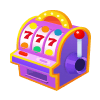.jpg)
For example, if two stocks that usually move together diverge in price, an HFT firm might buy the underpriced stock and short the overpriced one, expecting the prices yield curve valuation model to converge. The bid-ask spread often tightens with HFT firms actively competing for arbitrage opportunities. This translates to lower transaction costs for all market participants. High-frequency trading is a highly technical and fast-paced approach that leverages speed, technology, and data to generate profits. It operates in a world where milliseconds can mean the difference between profit and loss, making it a game of both precision and strategy.
Some professionals criticize high-frequency trading since they believe that it gives an unfair advantage to large firms and unbalances the playing field. It can also harm other investors that hold a long-term strategy and buy or sell in bulk. High-frequency trading, along with trading large volumes of securities, allows traders to profit from even very small price fluctuations. It allows institutions to gain significant returns on bid-ask spreads. More specifically, some companies provide full-hardware appliances based on FPGA technology to obtain sub-microsecond end-to-end market data processing.
.jpg)
High-frequency trading (HFT) is algorithmic trading characterized by high-speed trade execution, an extremely large number of transactions, and a very short-term investment horizon. HFT leverages special computers to achieve the highest speed of trade execution possible. It is very complex and, therefore, primarily a tool employed by large institutional investors such as investment banks and hedge funds. Advanced computerized trading platforms and market gateways are becoming standard tools of most types of traders, including high-frequency traders. Broker-dealers now compete on routing order flow directly, in the fastest and most efficient manner, to the line handler where it undergoes a strict set of risk filters before hitting the execution venue(s). In HFT, trades are executed at high speeds and a large number of transactions are executed in a short time frame.
Statistical Arbitrage
Yes, high-frequency trading does occur in the cryptocurrency market. Using algorithms, it analyzes crypto data and facilitates a large michael lewis’ the big short volume of trades at once within a short period of time—usually within seconds. It is possible for high-frequency traders to conduct trades within 64 millionths of a second. Computers process orders and send them to other machines in roughly this timeframe. Using automated systems, they can scan markets for information and respond faster than any human could.
.jpg)
It has become an integral part of modern financial markets and has reshaped the way trades are executed. High-frequency trading (HFT) is an automated trading platform that large investment banks, hedge funds, and institutional investors employ. It uses powerful computers to transact a large number of orders at extremely high speeds. Employing sophisticated algorithms for the rapid execution of numerous orders, HFT capitalizes on price discrepancies. However, concerns regarding its potential to exacerbate short-term volatility and its influence on market pricing necessitate scalping forex strategies directory continuous scrutiny. Another set of high-frequency trading strategies are strategies that exploit predictable temporary deviations from stable statistical relationships among securities.
Is High-Frequency Trading Profitable?
High-Frequency Trading (HFT) refers to the practice of using advanced technology and algorithms to execute a large number of trades in a fraction of a second. It is a form of automated trading that relies on computers to analyze market data, identify trading opportunities, and execute trades at lightning-fast speeds. High-frequency traders are often credited with providing essential liquidity to markets, narrowing bid/ask spreads, and efficiently matching buyers and sellers. Many of these firms are high-frequency traders, characterized by their rapid execution and high volume of trades.
These algorithms are able to scan the market, locate an opportunity and execute a buy or sell order in a second or less. One-Sided ProfitsHigh-frequency trading is not possible for retail investors due to their lack of infrastructure. Due to this, only large companies with the required infrastructure can profit using the strategy, and retail investors lose out. In HFT, complex algorithms analyse individual stocks to spot emerging trends in milliseconds.
Automated Trading
- It is possible for high-frequency traders to conduct trades within 64 millionths of a second.
- It is important to note that while HFT trading brings these advantages, it also comes with certain risks and concerns.
- This includes special high-speed trading, co-located servers right next to stock exchanges to reduce delays, and direct connections to the market.
- Some of the most well-known HFT firms include Tower Research, Citadel LLC, and Virtu Financial.
- Slippage takes small bites out of your profits, and that can add up over time.
- These robots are the reason listed stocks seem to hover at certain price ranges.
Tamta’s writing is both professional and relatable, ensuring her readers gain valuable insight and knowledge. Company news in electronic text format is available from many sources including commercial providers like Bloomberg, public news websites, and Twitter feeds. Automated systems can identify company names, keywords and sometimes semantics to make news-based trades before human traders can process the news. The main benefit of high-frequency trading is the speed and ease with which transactions can be executed.
What is Algorithmic Trading?
You should only trade in these products if you fully understand the risks involved and can afford to incur losses. Traders with the fastest execution speeds are generally more profitable than those with slower execution speeds. HFT is also characterized by high turnover rates and order-to-trade ratios. HFT trading is legal, provided the firm is employing legitimate trading methods. HFT firms operate under the same regulations as every other market participant.
How is high-frequency trading beneficial to the markets?
- The opaque nature of HFT algorithms raises concerns about fairness and transparency.
- It has replaced a number of broker-dealers and uses mathematical models and algorithms to make decisions, taking human decisions and interaction out of the equation.
- Traders with the fastest execution speeds are generally more profitable than those with slower execution speeds.
- By leveraging vast amounts of market data and executing trades at incredibly high speeds, HFT traders aim to profit from small price discrepancies that may only last for a fraction of a second.
- Filippo specializes in the best Forex brokers for beginners and professionals to help traders find the best trading solutions for their needs.
- Many OTC stocks have more than one market-maker.Market-makers generally must be ready to buy and sell at least 100 shares of a stock they make a market in.
HFT has improved market liquidity and removed bid-ask spreads that would have previously been too small. This was tested by adding fees on HFT, which led bid-ask spreads to increase. One study assessed how Canadian bid-ask spreads changed when the government introduced fees on HFT. It found that market-wide bid-ask spreads increased by 13% and retail spreads increased by 9%. Human Error Is ReducedDue to the absence of human interference, HFT is always more effective than traditional trading.
News-Based Trading
A high-frequency trading firm can access information that predicts these changes. They buy the securities before the tracker funds do, and sell them back at a profit. What sets HFT apart is execution speed and the ability to analyze large amounts of data. Effective high-frequency trading can enhance market efficiency and integrate liquidity in a way that benefits all participants. However, there is also a downside; some forms of HFT may be deemed predatory or susceptible to misuse, as with many advanced technologies.























